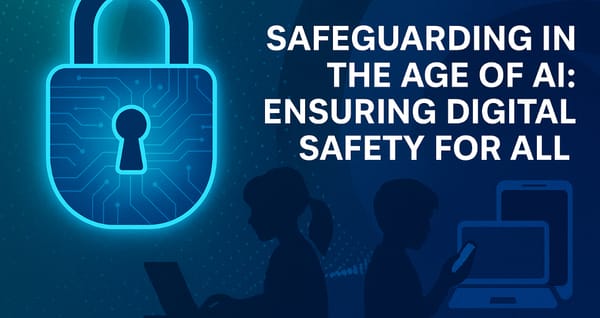Essential Trainings for Workplace Safety

Workplace safety isn't just a legal obligation—it's a crucial element in creating a secure and productive environment. The right training can prevent accidents, save lives, and foster a culture of well-being. Here, we’ll explore the essential trainings every workplace needs to ensure safety, guided by regulations and best practices.
Introduction to Workplace Safety
Workplace safety training is more important than it's ever been. The new Worker Protection Act in the UK, effective October 2024, mandates companies to proactively prevent sexual harassment. This legislation underscores the importance of safeguarding employees and maintaining a secure work environment. Understanding workplace safety from an international perspective is crucial in today's interconnected world. Different countries have varying regulations and standards, but the underlying objective remains the same: protecting the well-being of employees. In the European Union, for example, the Framework Directive on Safety and Health at Work requires employers to assess risks and implement measures to safeguard workers. Meanwhile, in Australia, the Work Health and Safety Act emphasises the importance of consultation between employers and employees to ensure safety standards are met. By learning from various international practices, organisations can adopt a comprehensive approach that not only complies with specific regulations but also embraces global best practices. This holistic understanding facilitates the creation of safer and more inclusive workplaces across diverse cultural and regulatory landscapes. With the advent of hybrid working models, the extended workplace—from offices to remote locations—poses new challenges. This guide will provide you with practical advice to implement effective workplace safety training.
Legal Requirements and Standards
Understanding legal requirements is the first step towards workplace safety. Regulations like the Health and Safety at Work Act 1974 and the new Worker Protection Act 2024 specify employers' duties in preventing workplace hazards and harassment. Compliance isn't just about avoiding penalties—it's about protecting your workforce and cultivating trust. Familiarise yourself with these standards, and ensure your policies are aligned.
Risk Assessment and Management
Risk assessment is the backbone of any safety program. Identify potential hazards in your workplace, from physical dangers like machinery to ergonomic risks in remote work setups. Develop a comprehensive risk assessment plan that includes regular inspections, employee feedback, and strategies for mitigating identified risks. Tools like risk assessment templates can be invaluable.
Emergency Preparedness
Being prepared for emergencies can save lives. Training in fire safety, first aid, and evacuation procedures is critical. Regular drills and clear communication plans ensure everyone knows their role in an emergency.
The Importance of Self-Defence
In the realm of workplace safety, self-defence is an often overlooked yet crucial component. As employers focus on compliance and risk management, it's vital to remember that personal safety extends beyond immediate hazards. Self-defense training empowers employees with the skills and confidence to protect themselves in potentially dangerous situations. This training is not just about physical techniques; it also involves awareness, de-escalation skills, and understanding situational dynamics. By incorporating self-defence into safety programs, organisations demonstrate a commitment to the holistic well-being of their employees, cultivating an environment where everyone feels secure and valued.
Safety Equipment and Personal Protective Gear
Proper use and maintenance of safety equipment can prevent many workplace injuries. Ensure employees are trained to use personal protective equipment (PPE) correctly, from helmets to high-visibility clothing. Regular checks and replacements of worn-out gear are essential. The PPE Regulation 2016/425 outlines the standards for equipment safety—ensure your gear complies.
Health and Safety Training for Employees
Continuous education is key to maintaining a safe workplace. Regular training sessions on the latest safety protocols and practices keep employees informed and vigilant. Use a mix of in-person and online training modules to cover diverse topics, such as manual handling, cyber security, and mental health. Resources like IOSH and NEBOSH offer accredited courses for comprehensive training.
Reporting and Investigation of Incidents
Encouraging a culture of transparency and accountability means employees are more likely to report incidents. Establish clear reporting procedures and ensure that all employees are aware of them. Analyse incidents to understand root causes and prevent future occurrences. The RIDDOR regulations outline the types of incidents that must be reported and can guide your reporting processes.
Effectively managing the reporting and investigation of harassment incidents is a critical responsibility that organisations must approach with diligence and compassion. Employers have a duty to establish clear and accessible reporting channels that encourage employees to come forward without fear of retaliation. It's essential to appoint trained personnel to handle these reports with sensitivity and professionalism, ensuring that all complaints are taken seriously and investigated thoroughly. Comprehensive investigations should be conducted impartially and confidentially, respecting the rights of all parties involved. Employers must also ensure that appropriate action is taken based on the findings, aligning with both internal policies and legal standards. This commitment to rigorous investigation processes not only reinforces a safe workplace culture but also demonstrates the organisation’s dedication to safeguarding employee well-being. By prioritising transparency and accountability, organizations can foster trust and create an environment where everyone feels empowered and protected.
Continuous Improvement
Workplace safety is an ongoing process. Regularly review and update your safety policies to reflect new risks and changing regulations. Engage employees in safety discussions and solicit their feedback to identify areas for improvement.
Final Thoughts
Workplace safety training is fundamental to protecting employees and ensuring business success. By adhering to legal standards, conducting thorough risk assessments, and fostering a culture of continuous improvement, you can create a safe and productive work environment. For personalized guidance and training tailored to your business needs, get in touch with our experts at Stay Safe Global. Together, we can build a workplace where safety and productivity thrive.
Workplace safety often encompasses areas that many people are reluctant to discuss, such as self-defense training and harassment prevention. However, these areas remain crucial to ensuring a comprehensive safety strategy. Ignoring these issues can leave employees vulnerable and compromise the overall security of the workplace. It is essential for organisations to address these topics openly and integrate relevant training into their safety programs. By doing so, employers not only comply with legal obligations but also demonstrate a genuine commitment to safeguarding the physical and emotional well-being of their workforce, fostering a culture of respect and security.
Why Choose Stay Safe Global
Stay Safe Global stands at the forefront of workplace safety, renowned for its expertise and dedication to providing top-notch safety solutions. With years of experience, our industry experts have developed a deep understanding of diverse organisational needs and the evolving challenges faced by workplaces today. Our comprehensive range of services, from customised training modules to ongoing support, ensures that businesses are equipped to handle safety concerns effectively. Our team is committed to tailoring our offerings to meet your specific requirements, providing personalised guidance to enhance your safety protocols. By partnering with Stay Safe Global, organisations can trust that they are not only compliant with industry standards but also fostering a protective and proactive work environment. Our mission is to empower businesses to prioritise safety as a foundation for success, promoting a culture where every employee feels valued and secure. Let us help you elevate your safety strategies, creating a workplace that exemplifies excellence and care.





